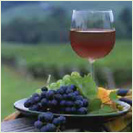 The aim of this study was to review the literature in order to determine the levels of potentially harmful metals in table wines.
The aim of this study was to review the literature in order to determine the levels of potentially harmful metals in table wines.
We know red wine is healthy, but is it safe?
First, the details.
- Levels of metals in red and white wines from different countries were measured.
- Argentina
- Austria
- Brazil
- Czech Republic
- France
- Germany
- Greece
- Hungary
- Italy
- Jordan
- Macedonia
- Portugal
- Serbia
- Slovakia
- Spain
- A formula called the Target Hazard Quotient (THQ) was used to test the wines.
- The THQ formula was developed by the U.S. Environmental Protection Agency.
- It’s used to estimate potential health risks associated with long-term exposure to environmental pollutants.
- A THQ below 1.0 is considered non-hazardous.
And, the results.
- Apart from the wines from Italy, Brazil and Argentina, all other wines exhibited THQ values that indicated significant risk.
- The values for vanadium, copper and manganese were highest.
- Typical potential maximum THQ values ranged from 50 to 200.
- Hungarian and Slovakian wines reached 300.
- THQ values for both red and white wines were high — ranging from 30 to 80 based on a 250 mL glass per day.
The bottom line?
These results raise questions about the health benefits of red wine.
The authors from Kingston University in London, UK concluded, “The THQ values calculated are concerning in that they are mainly above the safe level of THQ less than 1.”
They believe that “Levels of metal ions should appear on wine labels.”
10/31/08 19:16 JR